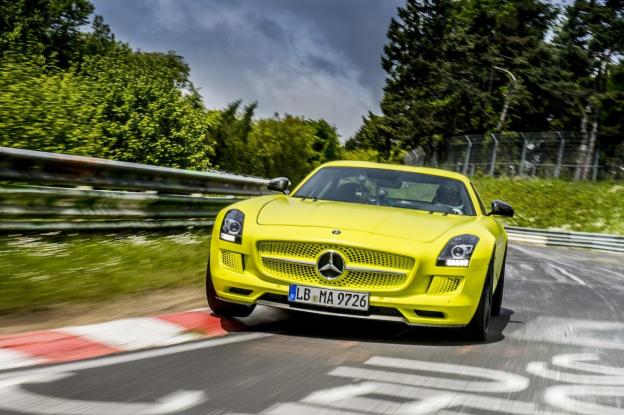
While Audi has backed off its R8 e-tron production plans, Mercedes is roaring forward, albeit rather quietly, with its SLS AMG Coupé Electric Drive.
Mercedes recently won the 24 Hours Nürburgring with its SLS AMG GT3. Now the illustrious German brand has made a new notch in its belt by setting a lap record on the north loop of the Nurburgring, called “Green Hell,” with its SLS AMG Coupé Electric Drive.
With a time of 7:56.234 minutes around the 12-mile circuit, Mercedes-Benz has effectively slapped the trophy out of the hands the Audi R8 e-tron, which had formerly set the record at 8:9.099 minutes. It’s unclear if the car’s wind resistance was decreased because the air scurried to get away from the electro-Benz’s retina-searing neon yellow paint scheme.
Powered by four electric motors, the SLS AMG Coupé Electric Drive produces 751 horsepower and 738 pound-feet of torque. That savage power output will push the SLS Electric Drive to 62mph in 3.9 seconds and onto an electronically limited top speed of 155mph.
While the SLS Electric Drive is cool on the outside, underneath it’s bits are even cooler. The electric motors are capable of braking or accelerating each individual wheel, which improves cornering capabilities, reduces steering input, increases traction, and minimizes traction control intervention.
Unlike Audi’s R8 e-tron, you can actually buy the Mercedes SLS Electric Drive. It’ll cost you $549,780. Is owning the world’s strongest and fastest EV with the hefty asking price? If you’re a rich enough EV fan, we suppose.


